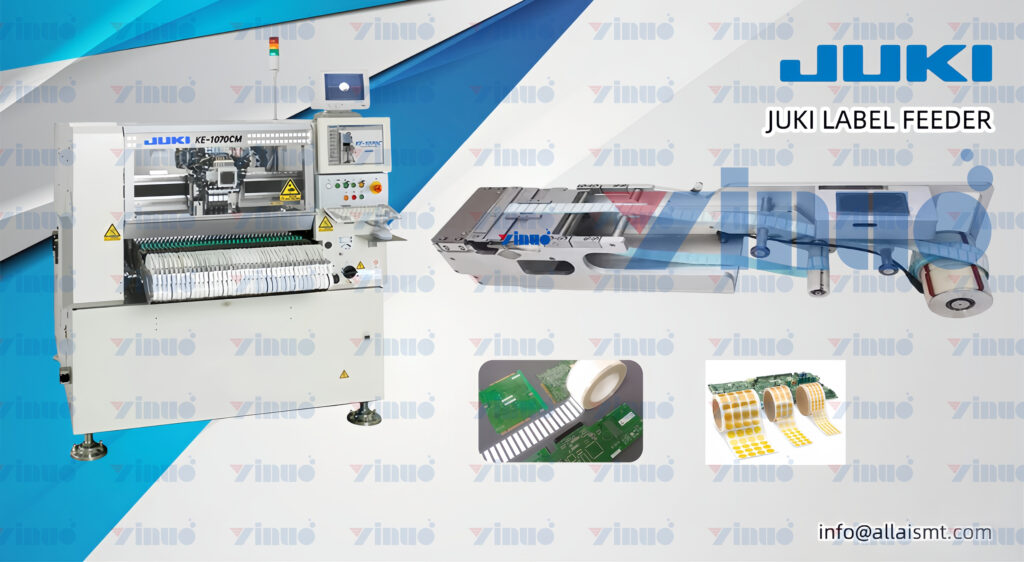The Cost-Effectiveness of Automated Label Feeders
In today’s competitive market, businesses continuously seek ways to improve efficiency and reduce costs. One area where significant cost savings can be realized is in the labeling process. Automated label feeders offer a cost-effective solution that not only enhances productivity but also reduces labor costs, minimizes errors, and optimizes resource utilization. This article explores the various aspects of cost-effectiveness associated with automated label feeders and how they contribute to a company’s bottom line.
Reduced Labor Costs
Manual labeling is labor-intensive and requires a considerable amount of time and effort from employees. By automating the labeling process, companies can significantly reduce the number of staff required for this task. Automated label feeders handle the repetitive and time-consuming job of label application, freeing up employees to focus on more value-added activities. This reduction in labor costs is particularly beneficial in high-wage environments or where there is a need to maximize the efficiency of a limited workforce.
Increased Productivity
Automated label feeders can apply labels much faster than human workers, leading to increased production rates. These systems can operate continuously and handle high volumes of products with consistent speed and accuracy. The boost in productivity allows companies to meet customer demands more efficiently, reduce lead times, and increase overall throughput. The ability to label more products in less time translates directly into cost savings and higher revenue potential.
Minimized Labeling Errors
Labeling errors can be costly, leading to product recalls, rework, and damage to a brand’s reputation. Automated label feeders are equipped with advanced sensors and control mechanisms that ensure labels are applied accurately and consistently. By minimizing labeling errors, businesses can avoid the expenses associated with correcting mistakes, such as labor costs for re-labeling, wasted materials, and potential fines for non-compliance with regulatory standards. The reduction in errors also enhances customer satisfaction and loyalty, contributing to long-term profitability.
Lower Material Waste
Manual labeling often results in a significant amount of wasted materials due to misapplied or damaged labels. Automated label feeders apply labels precisely and consistently, reducing the likelihood of waste. This efficiency not only lowers the cost of materials but also contributes to environmental sustainability by minimizing waste. Companies can save money on label stock and packaging materials, further enhancing the cost-effectiveness of automated label feeders.
Improved Inventory Management
Efficient labeling is crucial for effective inventory management. Automated label feeders ensure that products are accurately labeled with barcodes, QR codes, or other tracking information. This accuracy facilitates better inventory tracking, reduces the risk of stockouts or overstock situations, and improves overall supply chain management. Better inventory management leads to cost savings by optimizing stock levels, reducing storage costs, and enhancing order fulfillment efficiency.
Enhanced Scalability
Automated label feeders offer scalability that manual labeling cannot match. As a business grows and production volumes increase, automated systems can easily be scaled up to handle higher demands without a proportional increase in labor costs. This scalability is cost-effective because it allows companies to expand operations without the need for significant additional investments in labor or infrastructure. The flexibility of automated label feeders to accommodate different label sizes and types also supports business growth and diversification.
Long-Term Investment Benefits
While the initial investment in automated label feeders may seem substantial, the long-term benefits far outweigh the costs. The return on investment (ROI) for automated labeling systems can be realized through ongoing labor savings, increased productivity, reduced errors, and lower material waste. Additionally, many automated systems come with features that enhance their longevity and reliability, such as easy maintenance and adaptability to future labeling requirements. Over time, the cost savings and efficiency gains contribute to a healthier bottom line and a competitive edge in the market.
Better Resource Utilization
By automating the labeling process, companies can better utilize their human and technological resources. Employees can be reallocated to tasks that require human judgment and creativity, such as quality control, process improvement, and customer service. This better utilization of resources leads to a more engaged and productive workforce, contributing to overall operational efficiency and cost-effectiveness.
Regulatory Compliance and Avoidance of Fines
In industries with stringent labeling regulations, non-compliance can result in significant fines and legal costs. Automated label feeders ensure that all regulatory requirements are met consistently, reducing the risk of non-compliance. By avoiding fines and the costs associated with legal issues, businesses can protect their financial health and maintain a positive reputation.
Conclusion
The cost-effectiveness of automated label feeders is evident across multiple facets of business operations. From reducing labor costs and increasing productivity to minimizing errors and material waste, these systems provide substantial financial benefits. The scalability, long-term investment returns, and enhanced resource utilization further contribute to their value proposition. As businesses strive to improve efficiency and stay competitive, investing in automated label feeders emerges as a strategic move that delivers significant cost savings and operational advantages. By leveraging the power of automation in labeling, companies can enhance their profitability and ensure sustainable growth in a dynamic market.

